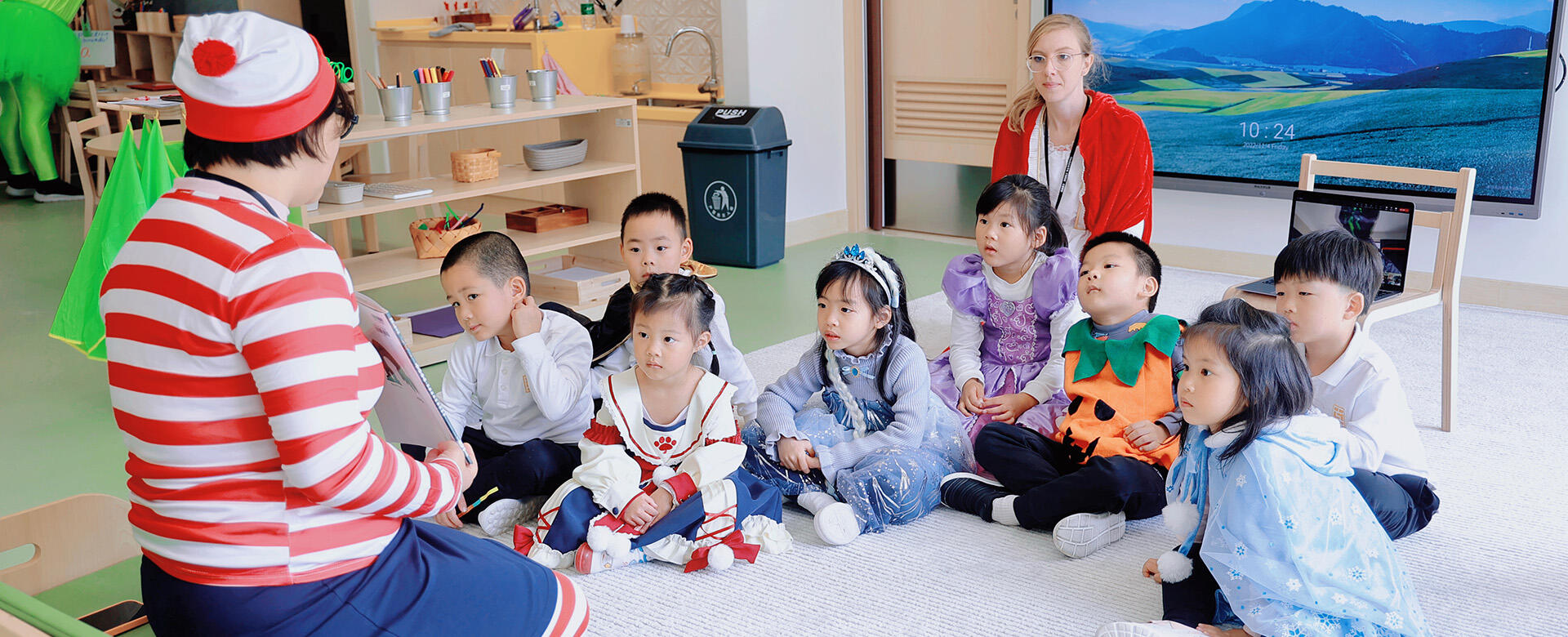
Let's look at some of the fantastic learning experiences children in EY3&4 had last week!
But at Hiba Academy Nantong, language learning is so much more fun for the children! The teachers are committed to creating a bilingual immersion environment that will help children naturally develop their language skills in both Chinese and English in their daily lives. The beauty of immersion bilingualism is that it creates an authentic environment for learners to use the language. It facilitates communication and expression through a variety of roles and allows children to express emotions, share information and meet needs. This is the joy of learning a language.
This week we've invited two teachers, Ms. Judy and Ms. Kathryn from EY2, to hear what they have to say about our Nursery’s bilingual immersion environment.
What does an immersive bilingual environment look like?
We strive to create a comfortable, confident and natural bilingual environment in which children are more willing to open up and communicate. In the Nursery, everything is bilingual, such as documents, displays and even our guidance signs are in English and Chinese. The children are also free to choose the language they want to use when expressing themselves and the teacher acts more as a guide to help the children to realise that they are being asked to use two different languages in order to go closer to deeper learning.
Clever design of a bilingual environment
The teachers cleverly set up inspiring situations to guide the children's language communication, for example when we discussed Chinese New Year, we extended our discussion to include thinking about Western Christmas. Ms. Judy would talk about traditional Chinese customs in Chinese and Ms. Kathryn would share with the children in English, adding some English words and phrases.
Cooperation between Chinese and western teachers
The partnership between the Chinese and foreign teachers is more like an integration in the daily teaching of the Nursery. The two languages they use are not compartmentalized but appear in a very natural way in the children's daily lives. The Chinese teacher is not a translator, she helps the children to form an overview of the deeper issues and assists them to communicate confidently and comfortably with the western teacher for the next step in their learning.
The challenges
For children who have not been exposed to a bilingual environment before, there are always challenges during their first days in school. It's not just children, but adults too, who are shy, timid, uncomfortable, frustrated and bored when they first enter an unfamiliar language environment... Teachers will develop strategies to cope with the different sources of emotion.
For example, if a child is new to the school and feels timid and does not want to join the group to play, the teacher will not rush him immediately but will respect his choice. “If you don't want to sit in the Circle Time, that's fine. We'll take a small chair. We'll sit next to the group and watch quietly". When he is ready, he will naturally join in.
Or perhaps the child is willing to communicate with the teacher but is nervous because he is not confident with the language, so more often than not the answer is 'no'. Our teachers will naturally lead: "Can you pass me a piece of paper?" Or in English, "Can you pass me a tool?". When the child succeeds in doing these small things, he will realise: "Actually, you understand the language I speak" or "So I can do what you do!", then slowly he builds up his confidence and joins the group.
How to help child build language confidence?
The teachers have many tools to help the children develop their bilingual skills, one very helpful one being the wellbeing and involvement charts. By measuring the two dimensions of wellbeing and involvement together, teachers can draw a complete emotional picture of each child and plan their teaching accordingly. When the teacher notices that the child is not participating well in class, she will analyse the reason: was the child not in a high mood in the first place? Or is he frustrated that he doesn't understand the teacher's words? Does he need additional help? With the aid of scientific scales, teachers work to improve the children's wellbeing and involvement, helping them to increase their curiosity and thus deepen their language learning.
Close home communication is also a great help in helping children develop their bilingual skills. Through intensive and efficient communication with families, teachers are able to obtain more information and work together to intervene and provide support to their children.
How to help child to switch languages more smoothly?
In their daily learning, we do not require the children to start off with Chinese for their Chinese teachers and English for their western teachers. We allow the children to communicate in a way that is comfortable to them: they can use body language, they can use 'key words'. When the children have reached a certain level of linguistic reserve, they will then engage in bilingual conversations with the Chinese and Western teachers.
In addition, the teachers use facial expressions and flexible body movements to deepen the children's understanding of English words.
Language skills are not learnt rigidly through word cards but are 'used' in real language situations. By creating an immersive bilingual environment, we allow children to develop their bilingual skills naturally in an inspiring context, while at the same time gaining a broader understanding of multiculturalism, a greater respect for human differences and an appreciation of diversity.